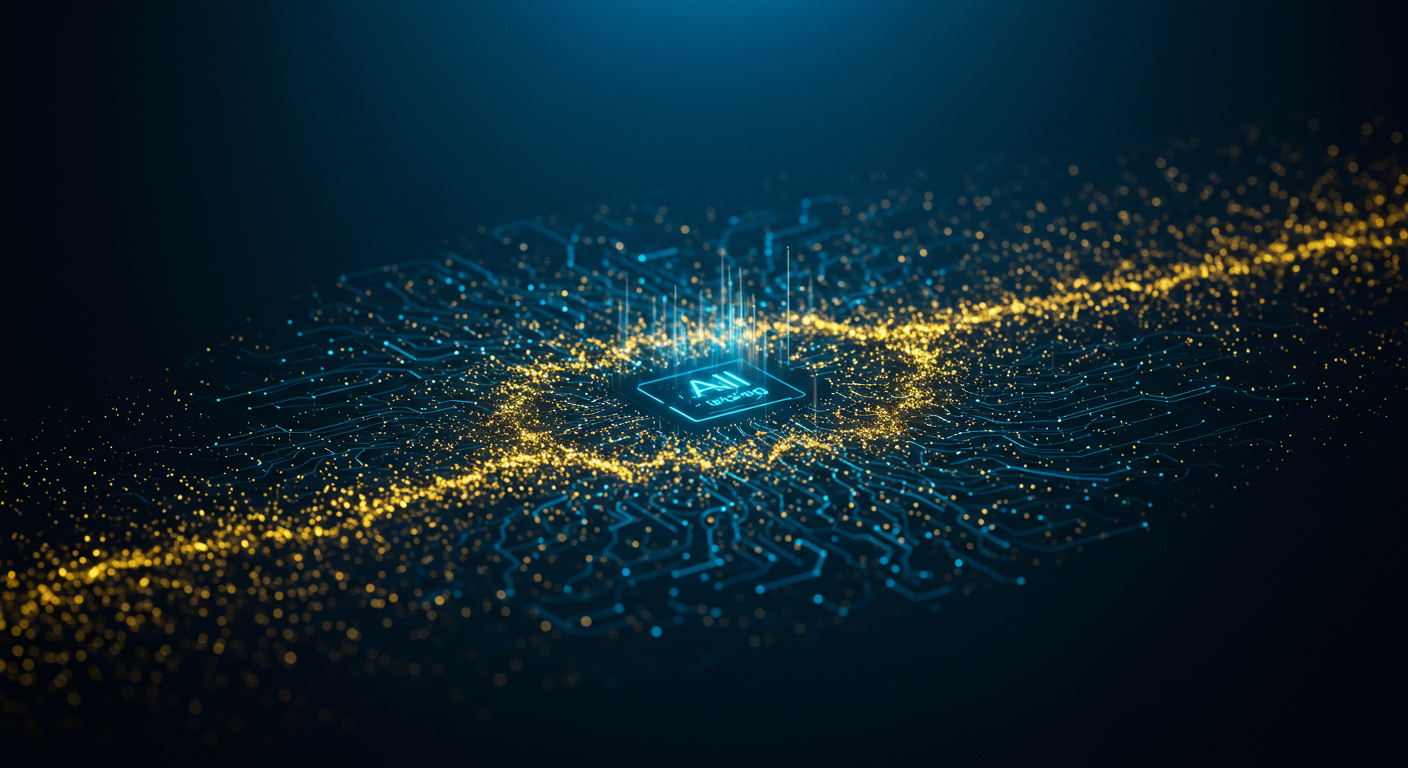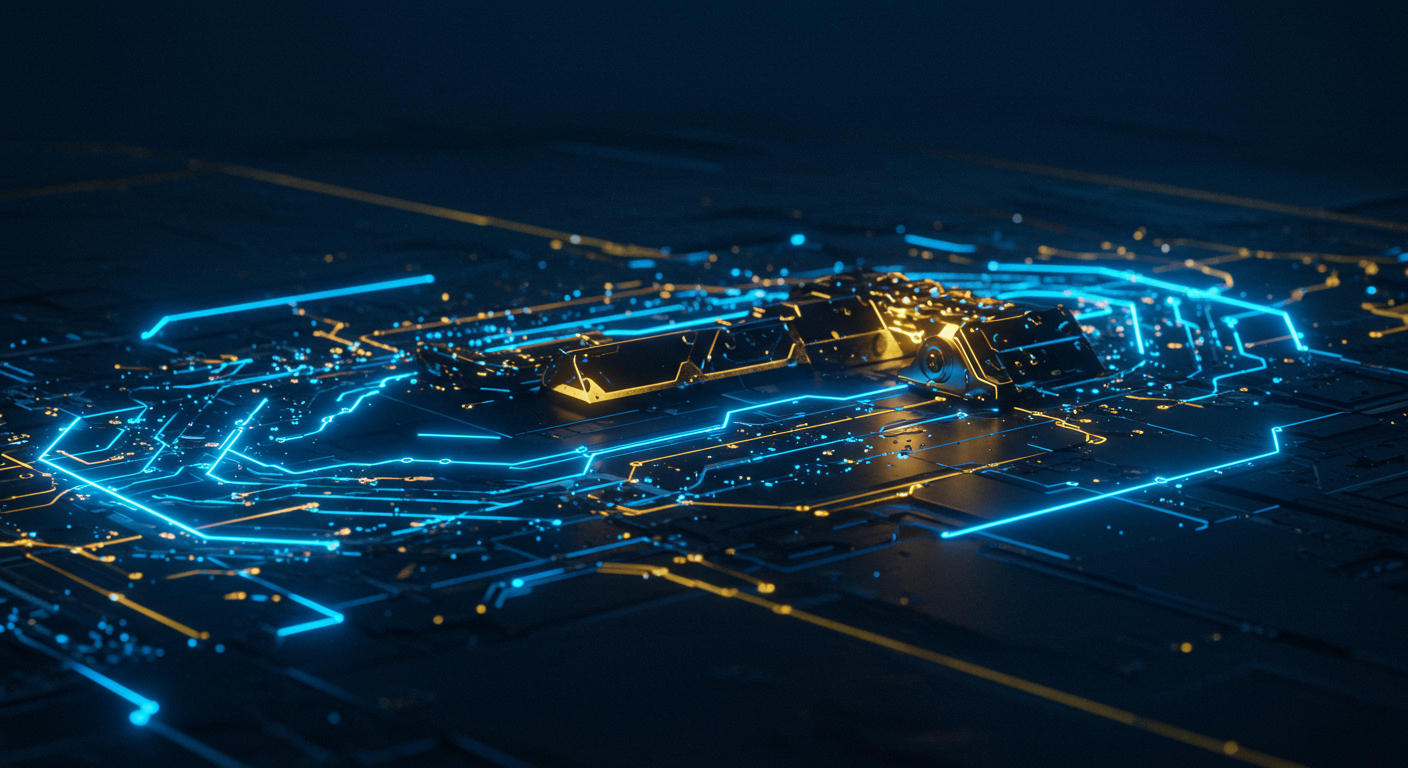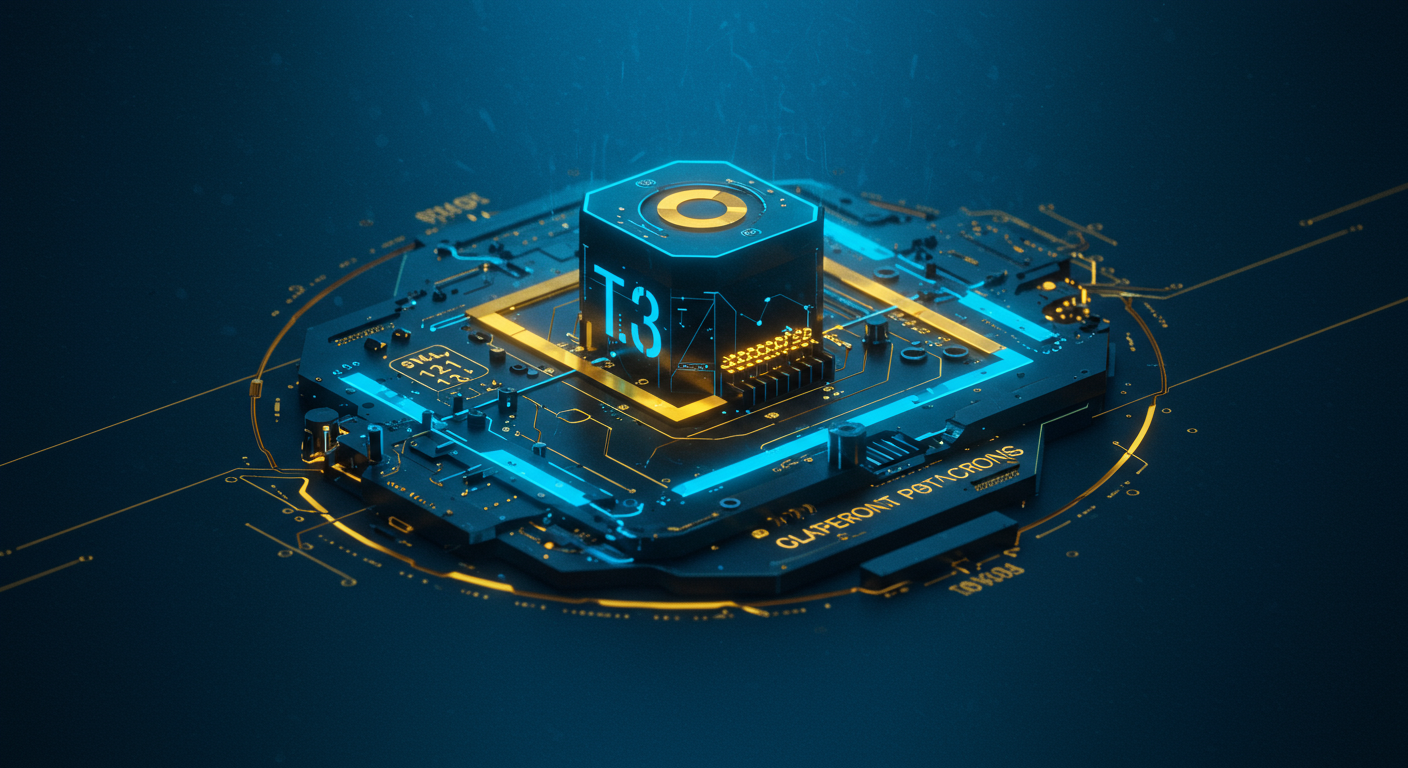AI Tracing: Unveiling the Secrets of Your Machine Learning Models

Decoding AI Tracing: A Comprehensive Guide
In the era of complex AI, blindly trusting your models is like navigating space without a map. Thankfully, AI tracing illuminates the way.
What is AI Tracing?
AI tracing is the process of monitoring and tracking the flow of data and computations within your machine learning models. Think of it as a digital breadcrumb trail for AI. Modern neural networks can have billions of parameters, making them nearly impossible to debug without tracing.
"AI tracing is not just about debugging; it's about understanding the very soul of your AI."
Tracing Evolution: From Software to AI
Traditional software tracing focused on function calls and execution paths. AI tracing takes this a step further. It grapples with:
- Data lineage: Tracking data from source to model output
- Model internals: Observing activations, gradients, and other model states
- Distributed training: Monitoring performance across multiple devices
Observability Demystified: Metrics, Logs, Traces
Consider observability as the holistic view of your AI system.
- Metrics: Numerical measurements (e.g., accuracy, latency)
- Logs: Event records (e.g., errors, warnings)
- Traces: End-to-end request monitoring, capturing the entire journey through the system.
Unveiling Insights with Tracing
Tracing offers several key benefits:
- Data flow understanding: Visualize how data moves through your model.
- Bottleneck identification: Pinpoint performance bottlenecks and resource constraints.
- Debugging: Quickly diagnose and resolve issues.
Responsible AI: The Tracing Connection
Tracing fosters responsible AI development. By understanding how your AI makes decisions, you can build more reliable, transparent, and ethical systems. It helps ensure you're not just building a powerful model, but also a trustworthy one.
Unlocking the secrets held within your AI models is now more accessible than ever, thanks to AI tracing.
The Essence of AI Tracing
Tracing in AI/ML is akin to following a breadcrumb trail inside your model, letting you peek behind the curtain and understand how it arrives at its predictions. Think of it as a debugger for your neural networks. It involves:
- Spans: These represent a unit of work within the system, like a specific layer in a neural network.
- Events: Significant occurrences within a span, such as a neuron firing above a certain threshold.
- Contexts: The metadata that binds spans and events together, providing a holistic view.
Visualizing Data Flow
Tracing doesn't just give you data; it helps you visualize it. For example, tracing a prediction might reveal that a particular image classification model relies heavily on edge detection in its initial layers. By visualizing this data flow, you can ensure your models are using the correct features.
Imagine tracing an image of a cat through a Convolutional Neural Network (CNN). Tracing allows you to visualize how different layers detect edges, textures, and ultimately, the cat's features.
Adapting to Different Architectures
The beauty of tracing is its adaptability. While the core principles remain consistent, specific implementations will naturally vary depending on the model architecture:- CNNs: Focus on feature extraction and pooling.
- RNNs: Emphasize sequential data processing and memory.
- Transformers: Highlight attention mechanisms and contextual understanding.
Distributed Tracing for AI
As AI systems grow more complex, often they're distributed across multiple machines. Distributed tracing for AI becomes essential to manage this complexity. Imagine ChatGPT routing a user query across several servers – tracing lets you follow that request end-to-end, identifying bottlenecks and ensuring efficient operation.
In summary, tracing isn't just about debugging; it's about gaining a deeper understanding of your AI models, paving the way for more efficient, reliable, and explainable AI. Next, we'll explore specific tools designed to make AI tracing easier than ever.
Here's how to finally demystify your AI models with tracing, and why it matters.
Practical Applications: Use Cases of AI Tracing in Action
AI tracing is no longer a theoretical exercise; it's a practical necessity for anyone serious about deploying reliable and understandable machine learning. It’s the microscope you use to see how your AI operates internally.
Debugging AI Model Performance
Ever had a model performing poorly and you don't know why? AI tracing to the rescue! You can pinpoint:
- Slow layers: Identify performance bottlenecks within your model's architecture.
- Incorrect calculations: Spot mathematical errors or numerical instability issues.
- Data anomalies: Detect input data that's causing unexpected model behavior. Imagine finding that a specific image format is consistently causing your image generation tool to fail.
Understanding Model Bias
Model bias is a critical ethical concern. AI tracing provides the capability to:
- Trace how different input features affect predictions, revealing potential bias against specific demographic groups. For instance, you might discover that your writing translation tool consistently underperforms for non-native English speakers.
- Implement solutions to mitigate and address bias, ensuring fair and equitable AI applications.
Improving Model Explainability
"Black box" AI is a problem. With AI explainability tracing you can:
Use traces to gain insights into why* a model made a particular decision. It's like having a model explain its thought process.
- Provide users with explanations of AI-driven decisions, enhancing trust and transparency.
- Generate more targeted marketing automation campaigns by understanding the factors influencing customer behavior.
Optimizing Model Performance
Tracing is not just for debugging; it’s for optimization:
- Identify bottlenecks and areas for improvement in model architecture.
- Fine-tune your training data by pinpointing which inputs lead to the best (or worst) outcomes.
- Optimize resource allocation by understanding which parts of the model are most computationally expensive.
Real-World Case Studies
Many diverse industries are adopting AI tracing including:
- Finance: Detecting fraudulent transactions and providing explanations to customers.
- Healthcare: Improving the accuracy and explainability of medical diagnoses.
- Retail: Optimizing recommendation systems for personalized shopping experiences.
- Cybersecurity: Enhancing threat detection and providing forensic analysis.
The best AI model tracing software helps developers peek under the hood and understand the inner workings of their complex machine learning models.
Choosing the Right Tools: A Comparison of AI Tracing Platforms

Picking the best ai tracing tools for your team and project can feel overwhelming, but it boils down to understanding your needs and matching them with the right features. Let's break down some popular options.
- Open Source vs. Commercial: Open-source solutions like custom solutions using OpenTelemetry offer flexibility and control, but require more hands-on management. Commercial platforms such as Honeycomb usually come with pre-built dashboards, support, and enterprise-grade features.
- Key Features: Look for data visualization that's intuitive, filtering options that let you narrow down specific events or data slices, and analysis tools that provide actionable insights. Integration with existing monitoring or Software Developer Tools is also key.
- Scalability and Performance: Can the platform handle the volume of tracing data your models generate? Think about the long-term growth of your models and data, and choose a platform that can scale with you.
- Security and Privacy: > Protecting sensitive data is paramount, especially in regulated industries. Ensure the tracing platform offers robust security features, including encryption, access control, and compliance certifications.
Comparing Specific Platforms

Consider these solutions as starting points:
| Platform | Pros | Cons |
|---|---|---|
| Honeycomb | Excellent data visualization, powerful querying, good for observability | Can be expensive for large datasets |
| Arize AI | Focus on model performance monitoring and drift detection | May require additional tools for root cause analysis |
| WhyLabs | Open source, extensible, good for data quality monitoring | Requires more setup and maintenance compared to commercial solutions |
| Fiddler AI | Specializes in explainability and bias detection | Can be complex to configure |
Ultimately, the ideal platform depends on your budget, team expertise, and specific model monitoring requirements. Start with a clear understanding of your needs, then explore trial versions and demos to find the best fit.
Unlocking the inner workings of AI models used to feel like gazing into a black box, but with AI tracing, we're finally turning on the lights.
Getting Started with AI Tracing: A Step-by-Step Guide
AI tracing lets you observe the behavior of your machine learning models in detail, providing insights into performance bottlenecks and areas for improvement. Think of it as equipping your AI with a tiny, hyper-efficient GPS tracker, recording its every move. Here's how to get started with ai tracing implementation:
Integrate Tracing in Your Workflow
- Adopt Early: Incorporate tracing from the get-go. Like adding Software Developer Tools to your workflow.
- Automate: Automate tracing processes within your CI/CD pipelines to ensure continuous monitoring.
Setting Up Your Tracing Infrastructure
- Choose a Collector: Select a tracing data collector (e.g., Jaeger, Zipkin) that suits your infrastructure.
- Configure Agents: Deploy tracing agents to collect data from your AI models and services.
Instrumenting Your AI Models
- Manual Instrumentation: Add tracing code to your model to track key metrics and events.
- Leverage Libraries: Use tracing libraries to streamline the instrumentation process.
Analyzing Tracing Data
- Visualize: Use tracing tools to visualize data flow and identify performance bottlenecks. Tools like Weight & Biases help with this process.
- Filter: Filter tracing data based on specific criteria to isolate issues.
Custom Dashboards and Alerts
- Define Metrics: Define key performance metrics, such as inference time and resource utilization.
With a robust ai model tracing tutorial, you'll transform your development from guesswork to a data-driven process. Let's shine a light on those "black boxes" and build better AI, one trace at a time.
Forget black boxes; with AI tracing, we're about to peek inside.
AI-Driven Tracing: The Next Evolution
Traditional tracing is reactive, but AI-powered tracing is proactive. Instead of just recording data, AI uses that data to analyze model behavior in real-time. Imagine Clarity AI, which helps you automatically identify anomalies and predict potential issues before they impact performance. It learns from your model's history to spot deviations from the norm.Edge Tracing: AI Unleashed at the Edge
As AI moves closer to the edge, we need tracing solutions that can keep up. Edge tracing focuses on monitoring AI models deployed on devices like smartphones, IoT sensors, and autonomous vehicles. This means understanding how these models perform in resource-constrained environments and identifying potential security vulnerabilities. For instance, you could monitor models on edge devices to understand the impact of different network conditions on accuracy, a task that is difficult without specialized tools.Federated Tracing: Unveiling the Distributed AI
Federated tracing tackles the unique challenge of tracing AI models trained on decentralized datasets.This approach is vital for industries like healthcare and finance, where data privacy is paramount.Think of it as tracing a collaborative symphony where each instrument is playing in a different concert hall.
Tracing for Responsible AI
The future of ai tracing will play a critical role in the development of more ethical and responsible AI systems. We need to understand why our models make certain decisions, especially when those decisions have real-world consequences. Tracing gives us the data to ensure fairness, accountability, and transparency.Tracing is rapidly converging with explainability and security. As AI systems become more complex, these three disciplines will become inseparable, driving a new era of responsible and robust AI development.
Keywords
AI tracing, ML tracing, AI observability, ML observability, AI debugging, ML debugging, explainable AI tools, AI performance monitoring, ML performance monitoring, tracing for machine learning models, AI model insights, ML model insights, AI error tracking, ML error tracking
Hashtags
#AIObservability #AITracing #MLDebugging #ExplainableAI #AISoftwareEngineering
Recommended AI tools
ChatGPT
Conversational AI
AI research, productivity, and conversation—smarter thinking, deeper insights.
Sora
Video Generation
Create stunning, realistic videos and audio from text, images, or video—remix and collaborate with Sora, OpenAI’s advanced generative video app.
Google Gemini
Conversational AI
Your everyday Google AI assistant for creativity, research, and productivity
Perplexity
Search & Discovery
Clear answers from reliable sources, powered by AI.
DeepSeek
Conversational AI
Efficient open-weight AI models for advanced reasoning and research
Freepik AI Image Generator
Image Generation
Generate on-brand AI images from text, sketches, or photos—fast, realistic, and ready for commercial use.
About the Author

Written by
Dr. William Bobos
Dr. William Bobos (known as 'Dr. Bob') is a long-time AI expert focused on practical evaluations of AI tools and frameworks. He frequently tests new releases, reads academic papers, and tracks industry news to translate breakthroughs into real-world use. At Best AI Tools, he curates clear, actionable insights for builders, researchers, and decision-makers.
More from Dr.

